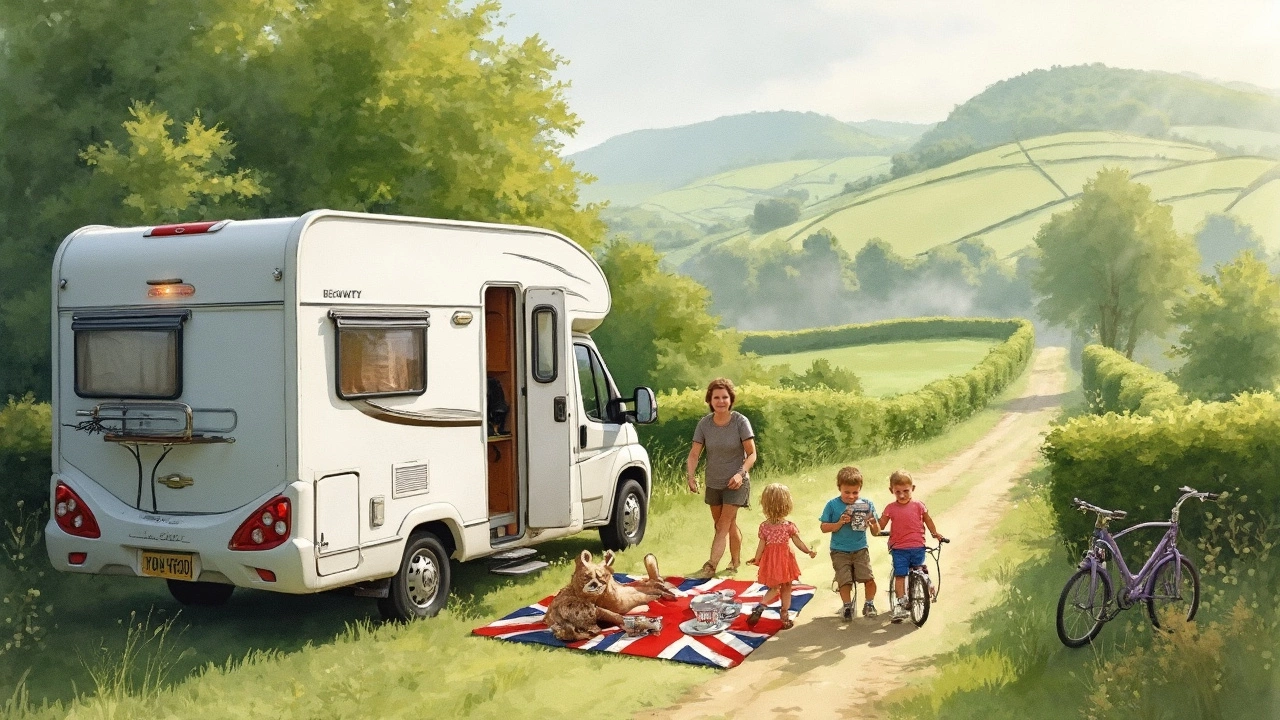Safe RV Travel: Essential Tips for a Trouble‑Free Road Trip
Got a motorhome and a road ahead? The excitement of rolling out in an RV is hard to beat, but safety should be your first stop. A few simple habits can keep you and your gear out of trouble and let you focus on the scenery.
Pre‑Trip Prep: Inspection and Planning
Before you turn the key, walk around the RV like a detective. Check tire pressure, tread depth, and look for cracks or bulges. Low pressure can cause a blowout, especially on the highway, so keep the numbers where the owner’s manual says they belong.
Next, test all lights—headlights, brake lights, turn signals, and marker lights. A quick bulb swap at home is easier than a roadside stop in the dark. Don't forget the backup camera if yours has one; make sure the screen works and the view is clear.
Weight matters. Distribute heavy items low and centered to improve handling and braking. Use the RV’s weight‑distribution hitch if you’re towing a trailer; it helps keep the front wheels planted and reduces sway.
Fuel planning is another big one. Know your tank size and average mileage, then map out fuel stations every 150‑200 miles. Running low in a remote area can turn a fun trip into a scramble.
Pack an emergency kit: spare tire, jack, lug wrench, basic tools, flashlight, batteries, first‑aid supplies, and a few water bottles. Keep it in an easy‑reach spot so you don’t have to hunt for it when the unexpected happens.
On the Road: Driving Smart and Staying Safe
When you hit the road, treat the RV like a big truck. Give yourself extra stopping distance—about double what you’d use in a car. Braking earlier reduces wear on the brakes and keeps you from tail‑gating other drivers.
Watch your speed, especially on curves and in windy conditions. High winds can push a tall RV like a sail, so slow down if the gusts pick up. If you feel the RV sway, gently ease off the gas and hold the steering wheel steady.
Take regular breaks. Driving a large vehicle can be tiring, and fatigue slows reaction time. Pull off at rest areas every two hours, stretch, and check your mirrors. A short walk helps you stay alert for the next leg.
When you encounter hills, use low gear to control the descent without riding the brakes. Climbing steep grades? Shift to a lower gear before you start, so the engine does the work and you avoid overheating the brakes.Night driving needs extra care. Turn on the interior lights low enough to see controls but not so bright that they blind you. Use the side mirrors to watch blind spots, and watch for low bridges or overhanging trees—your height can be a surprise.
Parking a motorhome can be tricky. Aim for level ground, engage the parking brake, and chock the wheels if the slope is steep. Turn off propane and disconnect the battery if you’ll be away for a while; this prevents leaks and accidental drains.
Finally, keep the paperwork handy. Insurance cards, registration, and a copy of the driver’s manual can save you time if you’re pulled over or need roadside assistance.
By doing a quick walk‑around, planning fuel stops, and driving with a little extra caution, you turn a potentially stressful trip into a smooth adventure. Safe RV travel isn’t about being nervous; it’s about being prepared, and that preparation pays off in miles of happy memories.
RV 333 Rule: What It Is and Why You’ll Love It for Motorhome Hire
Curious about staying comfortable and safe on road trips in a motorhome? The RV 333 rule is a simple guide that helps prevent burnout and makes every journey more enjoyable. This rule sets friendly boundaries for how far, how long, and how often you drive your hired motorhome. Learn the details, see how real travelers use it, and catch easy tips to make your next road adventure smooth and stress-free. If you want less road fatigue and more time for fun, this is the hack you need.
